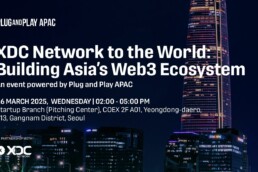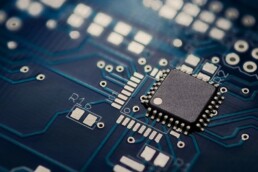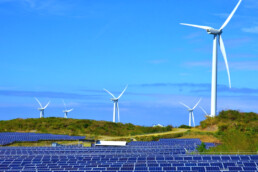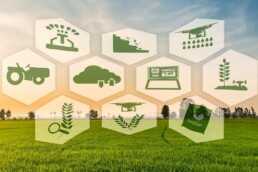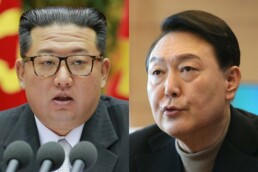What is the Korean New Deal?
The Korean government announced the Korean New Deal which plans to invest over $144 billion (160 trillion won) to create over 1.9 million jobs by 2025. Around $100 billion will come from the Korean treasury. $24 billion will come from local governments. Finally, $20 billion will come from the private sector.
Former South Korean President Moon Jae-in was personally involved in monthly strategy meetings regarding the Korean New Deal. Now with new South Korean President Yoon Suk-yeol, it is unknown how he will proceed with the Korean New Deal. The meetings focused on regulatory innovation and legislation required for the Korean New Deal. These meetings also increased regional participation in the Korean New Deal projects by cutting regulatory red tape, evaluation requirements, and local government fiscal situation reviews.
The Korean New Deal Fund
The public sector will lead the New Deal Fund in 20 trillion won ($18 billion) for 2021-2025. The New Deal fund will invest in wide-ranging areas of New Deal projects and businesses through various investment methods, such as equity investments and loans. Therefore this will provide the general public with opportunities to invest in K-New Deal projects through public offerings at lower risk.
Financial institutions such as KDB (Korea Development Bank), IBK (Industrial Bank of Korea), and Korea Credit Guarantee Fund will inject $91 billion (100 trillion won) through loans and guarantees.
Five of Korea’s largest financial holdings firms, such as KB, NH, Hana, Shinhan, and Woori Bank, will inject $63 billion (70 trillion won) through loans and investments.
K-New Deal Index
Korea Exchange will come out with the K-New Deal Index. It will consist of companies in biotech, the internet, gaming, and batteries. In addition, they will also have the carbon-efficiency green index, which will focus on companies with lower carbon emissions.
Recovery from the Coronavirus Pandemic
The coronavirus pandemic has left the Korean economy in its worst shape since the Asian financial crisis of 2008. Job losses were the highest in both the retail and wholesale sectors. The same can be said for the accommodation and food services sectors. Therefore, how well Korea recovers will be the key moving forward. The Korean New Deal is the start of this recovery.
The Korean New Deal project can be broken down into three major components.
- The Digital New Deal
- The Green New Deal
- The Human New Deal
In addition, there are ten key projects under the Korean New Deal.

The Digital New Deal
The Korean Digital New Deal finds reform in digitalizing all kinds of economic and social activities for a better future. This means providing the infrastructure compatible with 5G technology, artificial intelligence, and big data. The Korean government will create a single digitalized integral (intelligent government) system for production distribution, management, human resources allocation, and financial administration. The system will also help with traffic, water resources, and disaster response. In addition, the Korean government aims to supply digital equipment to all secondary schools, daycare centers, and over 160,000 SMEs to help them conduct daily education or business without being physically there.
The first step in the Digital New Deal will be to open over 140,000 pieces of public data to be digitized. This will be called the data dam project. It aims to establish an infrastructure for collecting and trading big data related to daily life, such as manufacturing, health care, finance, transportation, and biomedicine. Big data will be critical in creating a smart medical infrastructure in Korea.
The Green New Deal
The Korean government will aim to construct an eco-friendly and carbon-free society through the Green New Deal. Therefore Korea’s main objective of the Green New Deal is to establish an eco-friendly industrial and social environment. In addition, they plan to make an innovative ecosystem in the five leading green industries by selecting 100 of the top leaders in the industry.
Under the Green New Deal in Korea, the government will invest $66 billion in green infrastructure and renewable energies (wind, solar, and hydroelectric power). It will install solar panels on over 225,000 public buildings in Korea. This will lead to the creation of over 320,000 jobs by 2022 and 660,000 by 2025. Furthermore, Korea plans to close 50% of its coal plants by 2034.
Finally, there is a plan in the Green New Deal to make zero energy consumption for all public structures, such as parks, cultural facilities, schools, daycare centers, and museums. The Korean government will also build new smart cities, city forests, and national parks in Korea. In these smart cities, Korea will install “smart meters” in over 5 million apartments to help residents lower their electricity usage. Smart schools in Korea will involve setting up high-quality Wi-Fi and the distribution of 240,000 tablet PCs.
Mobility Project
Furthermore, to further reduce carbon, the Korean government aims to add over 1.1 million electric cars and over 200,000 hydrogen fuel cell cars by 2025. This also means building electric vehicle recharging stations and hydrogen refueling units across Korea.
The Ultimate goal of Korea’s Green New Deal is to end the use of fossil fuels. This will lead to Korea having zero net emissions by 2050.
The Human New Deal
The Human New Deal aims to provide emergency safety nets to the working class in Korea. The widening social safety net in Korea will narrow the gap between the rich and the poor. Projects under the Human New Deal will involve job training in new technologies and projects that will create jobs in new innovative sectors. It will provide jobs for the young population through various programs. Examples include forest management, fire prevention, industrial safety, and public data collecting projects. In addition, the Human New Deal will guarantee unemployment protection to all workers. As well as emergency relief funds for self-employed small and medium enterprises.
The Human New Deal aims to expand the number of people eligible for employment insurance from 13.67 million in 2019 to over 21 million by 2025. Furthermore, the Korean government will train 100,000 key personnel in software and AI technologies. As well as 20,000 in green convergence technology to respond to the changes in the employment structure in Korea.
Korean New Deal – Regional Projects Outside of Seoul
The Korean New Deal aims to shift the economic balance in Korea toward regions outside of Seoul. These regional projects will change the daily lives of Korean citizens living outside of Seoul through job creation. 50% of the 160 trillion won will be invested in projects outside Seoul. This will lead to more balanced development and recovery in South Korea. Some of these projects include:
- Installing green technology in outdated government-leased apartments
- Expansion of robotics factories
- Autonomous vehicle testing sites
- Development of publicly backed delivery platforms
- Installing AI technology in traffic systems
- Smart digital power plants
- Upgrades to liquified natural gas production
- Creation of special economic zones
- Setting up smart grids to raise energy efficiency and expand renewable energy farms
Popular
Related Posts
Renewable Energy Startups in Korea
November 2, 2023
Can Korean Startups Enter the North Korean Market
January 15, 2023
